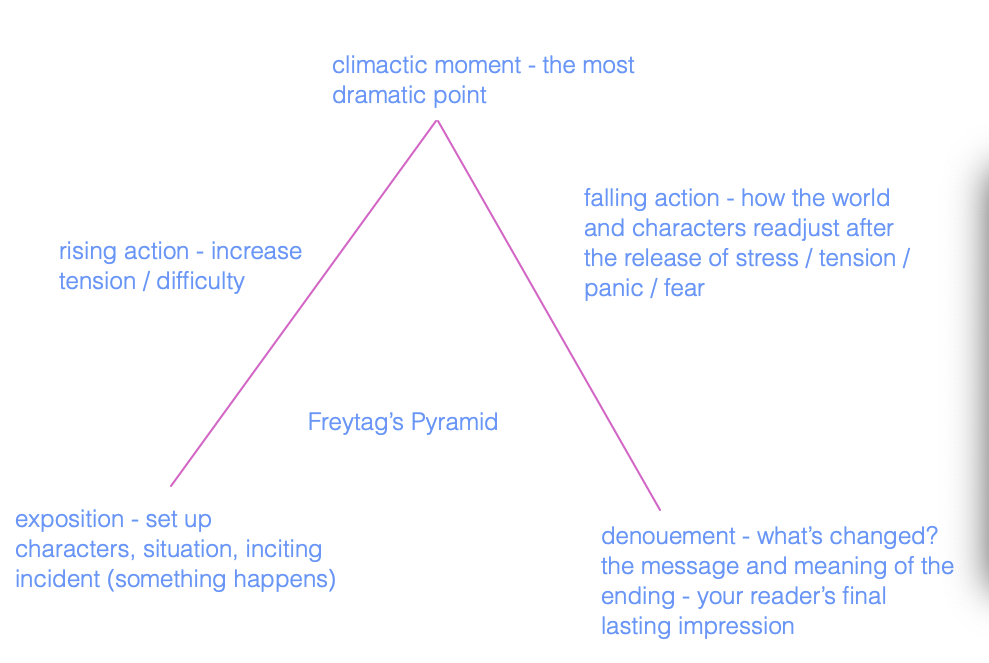Below, you’ll find a breakdown of his approach to story writing, precisely story structure – if you use this with your own stories, they will always feel clear and powerful too.
I’m going to tell you a secret about stories: no matter who wrote them, what genre or style they are, or which culture they’re from, they all roughly follow the same structural pattern.
This is not a new idea, and it’s not my own personal opinion – the theory of narrative structure was first proposed by Freytag, who developed the concept that in order for our brains to really properly learn and remember the important messages of stories, they have to follow a set kind of shape that enables us to think, feel and finally realise their deeper meanings.
Thanks for reading! If you’re interested, you can check our English Language and Literature courses here.

So this diagram above explains the overall shape of Freytag’s Pyramid. Once you start seeing narratives in this way, it’s difficult to unsee them. Take your favourite films, or books, or myths, or religious stories and try mapping those onto this structure – you’ll notice that they fit perfectly. Here are some examples:
How to Write a Perfect Conclusion
1: SLEEPING BEAUTY
- Exposition: castle, beautiful young girl, loving family, cursed by an evil witch
- Rising action: girl ages, curse comes true, whole castle is plunged into stasis
- Climactic moment: a prince comes to fight for the girl and release her and the castle from the curse
- Falling action: girl wakes from a kiss, falls in love, castle comes back to life
- Denouement: evil is defeated, true love reigns, the kingdom is restored and everyone lives happily ever after
2: DIE HARD
- Exposition: policeman on christmas holiday, visits his estranged wife, they argue, business building taken over by terrorists
- Rising action: terrorists murder the CEO, the wife is placed in charge, the policeman embarks on a mission to defeat the terrorists, meanwhile they accrue increasing power within the building
- Climactic moment: after fighting a long time and getting the wider world involved in the form of local police and FBI, the policeman is on his own fighting against all odds and the head terrorist holds his wife hostage. In a final shootout, the wife is saved, the terrorist defeated and the policeman lives.
- Falling action: his wife falls back in love with him, the wider world realises he is a national hero, the press and media are portrayed negatively as ignorant and self serving
- Denouement: the family is reunited, and live happily ever after
TASK: NOW TRY THE SAME WITH THREE STORIES THAT YOU KNOW AND LOVE
You can see how different these stories seem, and yet they follow exactly the same pattern. If you chose a story from Shakespeare, it would do the same. If you chose a Greek myth or a Biblical tale, it would also do the same.
When writing your own stories, be sure to always use this 5-point structure to plot out your key events, and stay aware of the final message or meaning that you’re leaving your readers or audience in the end. Remember as well that the rising action and falling action don’t have to be equal in length – often in stories, one is much longer than the other, but they still follow the general shape.
Thanks for reading! If you’re interested, you can check our English Language and Literature courses here.












